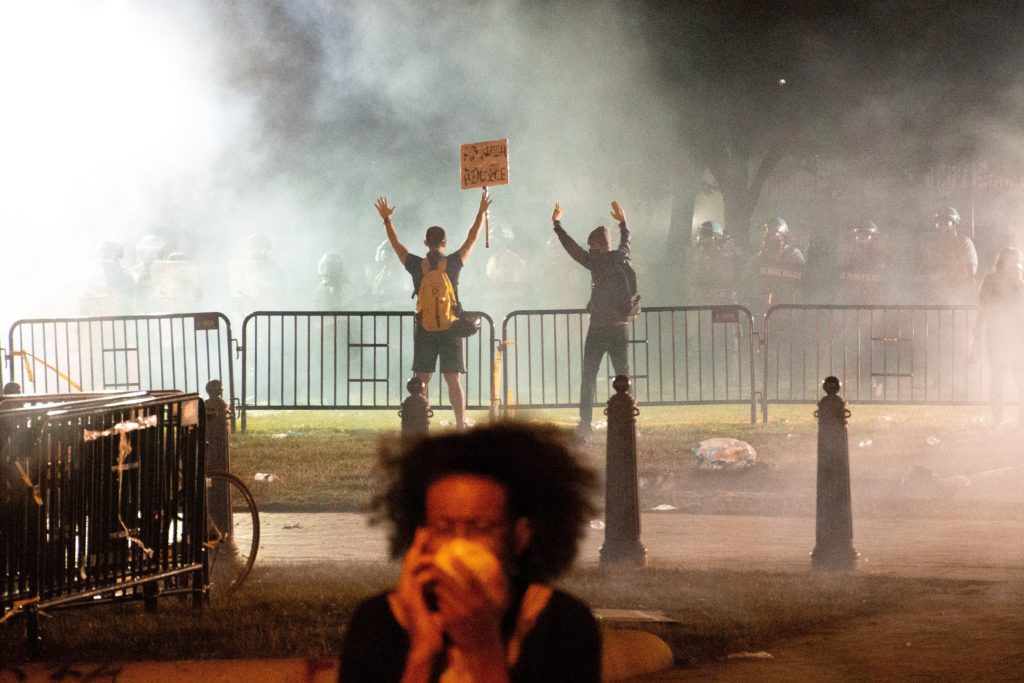Protecting Nonviolent Demonstrators by Reforming Anti-Riot Laws in the U.S.
An Article on Rethinking the Crime of Rioting
JUNE 2022
For decades, authorities have used anti-rioting laws to arrest and penalize peaceful protesters. In an article in the Minnesota Law Review, ICNL’s Nick Robinson argues that U.S. jurisdictions should eliminate anti-rioting laws, both to protect demonstrators better and because anti-rioting laws are fundamentally unnecessary.
The Black Lives Matter protests of 2020 were overwhelmingly nonviolent, yet in the year that followed, lawmakers across the country pointed to incidents of violence that did occur to introduce legislation that would strengthen or expand rioting offenses. New anti-rioting bills were proposed in over half of U.S. states and adopted in at least five, making the wave of legislation the most significant effort to remake the country’s anti-rioting laws in at least a generation. Given the general absence of violence during U.S. protests, the chilling nature of the anti-rioting bills, and the historical use of anti-rioting laws against nonviolent demonstrators, many saw the wave of legislation as an effort to target and intimidate peaceful protesters—particularly those speaking out for racial justice.
To better assess the wave of anti-rioting bills and assist policymakers interested in protecting nonviolent demonstrators, this article provides the first systematic analysis of the crimes of rioting and incitement to riot in all fifty states in the U.S. It traces the origins of rioting offenses to English common law, when the crime of rioting was a blunt tool that the government used to suppress political and religious dissent. It then shows how current anti-rioting laws in the U.S.—while varying considerably by jurisdiction—are unnecessary and often undermine the freedom of peaceful assembly.
The core offense of rioting–that is, violence or property destruction by individuals as part of a group–is already unlawful under other parts of state and federal criminal law, undercutting arguments that anti-riot laws are needed to protect public safety. Moreover, many rioting laws expand criminal liability for the offense to those who engage in no violence themselves but who are simply part of a crowd that is “rioting”; others make individuals liable for conduct that only threatens property destruction or violence. Meanwhile, many incitements to riot provisions are broad enough to capture merely provocative speech. The sweeping nature of these laws gives police and prosecutors wide discretion–a discretion that has a history of being used in a politicized and racialized manner.
The government has a clear interest in stopping riots. However, this article argues that, given other existing tools available to achieve this goal and the history of anti-rioting laws being used against nonviolent protesters, jurisdictions are better off eliminating the offenses of rioting and incitement to riot altogether. Where that is politically infeasible, the article lays out a framework for reforms to minimize the risk of their abuse.
Read the full article, Rethinking the Crime of Rioting, Minnesota Law Review, here.
Sign up for our newsletters
Sign up
